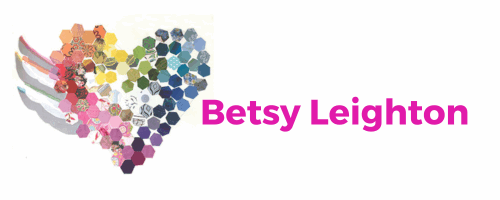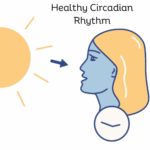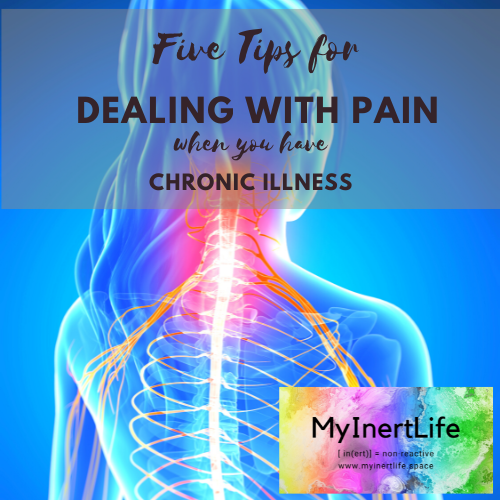This post discusses safe plastics for life and camping when you have a chronic illness like MCAS.
As an Amazon Associate, I earn from qualifying purchases.
Table of Contents
What is MCAS?
Mast Cell Activation Syndrome (MCAS) is a chronic condition that affects all organ systems. MCAS is serious and disabling and people with MCAS experience often significant and debilitating symptoms daily, including anaphylaxis, which can be fatal.
MCAS is often found in combination with other chronic conditions such as Ehlers-Danlos Syndrome (EDS) and Postural Orthostatic Tachycardia Syndrome (POTS).
Frequently healthcare providers do not know about MCAS, and the tests for MCAS are problematic because they are not uniformly reliable. MCAS can be difficult to manage. Treatments include blocking mast cell mediators with anti-histamines and mast cell stabilizers, as well as avoiding triggers.
Check out this post on how to manage MCAS.
Identifying safe plastics
I was diagnosed with thyroid nodules a year ago and made numerous dietary and lifestyle changes to reduce the chance of developing more of them. I adopted a low-oxalate diet to reduce my body’s tendency to create calcification. Then I started taking a supplement for thyroid nodule support. One of my health practitioners recommended I take just one drop of Lugol’s Iodine daily, while another one pointed out the controversy of using iodine.
Unfortunately, after a year I was completely bummed out to find that my thyroid antibodies were even higher, and an ultrasound revealed a third thyroid nodule had developed. So I dug further into the causes of developing thyroid issues, and a major one is plastics. I always knew that it wasn’t safe to microwave food in plastic containers, and I tried to make sure I was using “BPA-free” plastics. What I didn’t know was that by not using BPA in their plastics manufacturers were using BPS and /or BPF instead. So what are these letters, what does it all mean, and what are we to do?
What is BPA?
BPA is bisphenol A, a common chemical used in making plastic that doesn’t bind to the polymer in plastic manufacturing, thus making it free to migrate to whatever it is in contact with, whether our skin or our food. Mayo Clinic says, “Exposure to BPA is a concern because of the possible health effects on the brain and prostate gland of fetuses, infants, and children. It can also affect children’s behavior. Additional research suggests a possible link between BPA and increased blood pressure, type 2 diabetes, and cardiovascular disease.”
What is BPS?
BPS is bisphenol S, “… an endocrine disruptor and has comparable health risks to that of Bisphenol A. BPS has been shown to increase the expression of breast cancer carcinogens and the proliferation of positive breast cancer cells. Additionally, BPS exposure has been linked to impaired neural function.” – MillionMarker
What is BPF?
BPF is bisphenol F, which “… has been detected in canned food, thermal paper receipts, and soft drinks. BPF has also exhibited endocrine-modulating capabilities and its toxicity has also shown genotoxic effects, carcinogenic potencies, reproductive complacencies, and oxidative stress.” – BioMedCentral
Do you know your typical symptom progression?
One of the keys to understanding the level of your bucket is knowing your symptom progression. It is helpful to keep track of the symptoms you are having and to evaluate whether they are escalating. Symptom escalation means that the level of your bucket is rising.
Knowing your symptom progression in a symptom flare is the key to developing your own rescue plan. In this post, I discuss how to determine your own symptom progression. Once you know what typically happens in your symptom progression you can design a rescue plan to address those symptoms.
Get my free ebook, symptom log, and meal plan!
Want a tool to keep track of your symptoms easily? Sign up for my newsletter and you will receive my free 50-page ebook of lower-histamine, grain-free, sugar-free recipes, my free symptom log, and a free two-week meal plan!
Stick with safe plastics
So, after I realized the connection between thyroid nodules and plastics I took a close look at my exposures. I had been drinking sparkling mineral water daily to help with my stool health. But I was getting the cheap version at Costco in plastic bottles. So I switched to San Pellegrino sparkling mineral water in glass bottles only to realize that graphene has been found in it. My healthcare provider recommended Gerolsteiner sparkling mineral water in glass bottles instead.
I also wasn’t aware that receipt paper is a significant source of BPA, BPS, and/or BPF which readily migrate to the body through the skin. I’d been gradually switching to emailed receipts, but there are some situations where that isn’t possible, like at the gas station. So I got a little notebook to write down my expenditures to avoid touching receipt paper.
Safe plastics for camping
But one of the hardest places for me to avoid plastics is camping because Nalgene water bottles contain BPS; so I ditched my Nalgenes in favor of glass water bottles, which are heavier, and a pain if they break. In terms of water storage for camping, many of the lighter containers for water contain BPS. I had gotten my water jug for camping years ago, and though it says “BPA free” I had no idea if it had BPS or BPF. My research led me to conclude that GSI Outdoors collapsible plastic jugs are free of all three of the bisphenols. But collapsible jugs are really hard to pour out of and frequently roll right off a picnic table getting dirty and potentially dumping your water supply.
I liked the looks of the Dometic Go Hydration water jug, and though it says it’s BPA-free, I couldn’t find any sources that confirmed it was free of BPS and BPF. I called Dometic and was told it doesn’t have BPS or BPF, but in talking with my daughter who is a polymer chemist I got the sense that there are really no safe plastics to eat or drink out of if you have chronic health issues.
So, yeah. Bummer.
Plastic alternatives
But there are ways to use glass containers successfully when camping. I myself have wrapped gallon mason jars in bubble wrap and traveled with them. Yes, they are heavier, and could still break. But for now, that is what I’m going back to until science catches up and we have safer plastics.
Incidentally, MillionMarker has published its list of safe products here, if you are looking for a nice list of products that are free of chemicals known to be implicated in health concerns.
You can also check out my post about safer plastics here.
Check out these circadian health tools!
I’m an affiliate with Bon Charge, a company that makes tools for circadian health, and you can receive 15% off your order with my coupon code BETSYL.
Bon Charge offers tools such as yellow and red-tone blue-blocking glasses, red light therapy devices, PEMF mats, infrared saunas, and EMF blocking products.
Sign up for the SSP!
If you are dealing with chronic illness, concussions, or trauma, the Safe and Sound Protocol (SSP) is a listening therapy based on Polyvagal Theory that helps heal nervous system dysregulation. Many people with MCAS and other chronic conditions have nervous system dysregulation stemming from infections, toxic exposures, concussions, and trauma. The SSP is an easy-to-use app where you listen to specially filtered music for 30 minutes each day for a 5-hour cycle. Studies show the SSP has a profound effect on mental health and chronic conditions
You can sign up for the SSP here!
Heal your mind!
While the SSP is a bottom-up or somatic therapy for healing the nervous system, the Sacred Self-Healing Method I offer is a top-down nervous system healing modality that focuses on cognition, attention, perception, and emotion, using the mind’s higher functions. The SSP and the Sacred Self-Healing Method complement each other and together produce lasting results.
I provide one-on-one in-person and remote chronic illness and caregiver coaching and Sacred Self-Healing Sessions based on the Sacred Self-Healing Method, a proven novel co-creative healing modality detailed in my Books.
Click here for more information.
Order my books!
Rocks and Roots chronicles my journey solo backpacking the Superior Hiking Trail and overcoming nervous system dysregulation, gut dysbiosis, and Mast Cell Activation Syndrome symptoms to hike 328 miles successfully.
The Sacred Self-Healing Method ebook is available here and in most ebook retailers!
The Sacred Self-Healing Workbook is available for purchase here!
Betsy’s first book, Sacred Self-Healing: Finding Peace Through Forgiveness, is available here
Companion Recordings
The companion audio recordings of chants, guided meditations, and sound healing demonstrations that accompany Sacred Self-Healing: Finding Peace Through Forgiveness are available to download for free here
What do you think?
I’d love to have your reply below!
Disclaimer
The preceding material does not constitute medical advice. This information is for information purposes only and is not intended to be a substitute for professional medical advice, diagnosis, cure or treatment. Always seek advice from your medical doctor.from your medical doctor.




